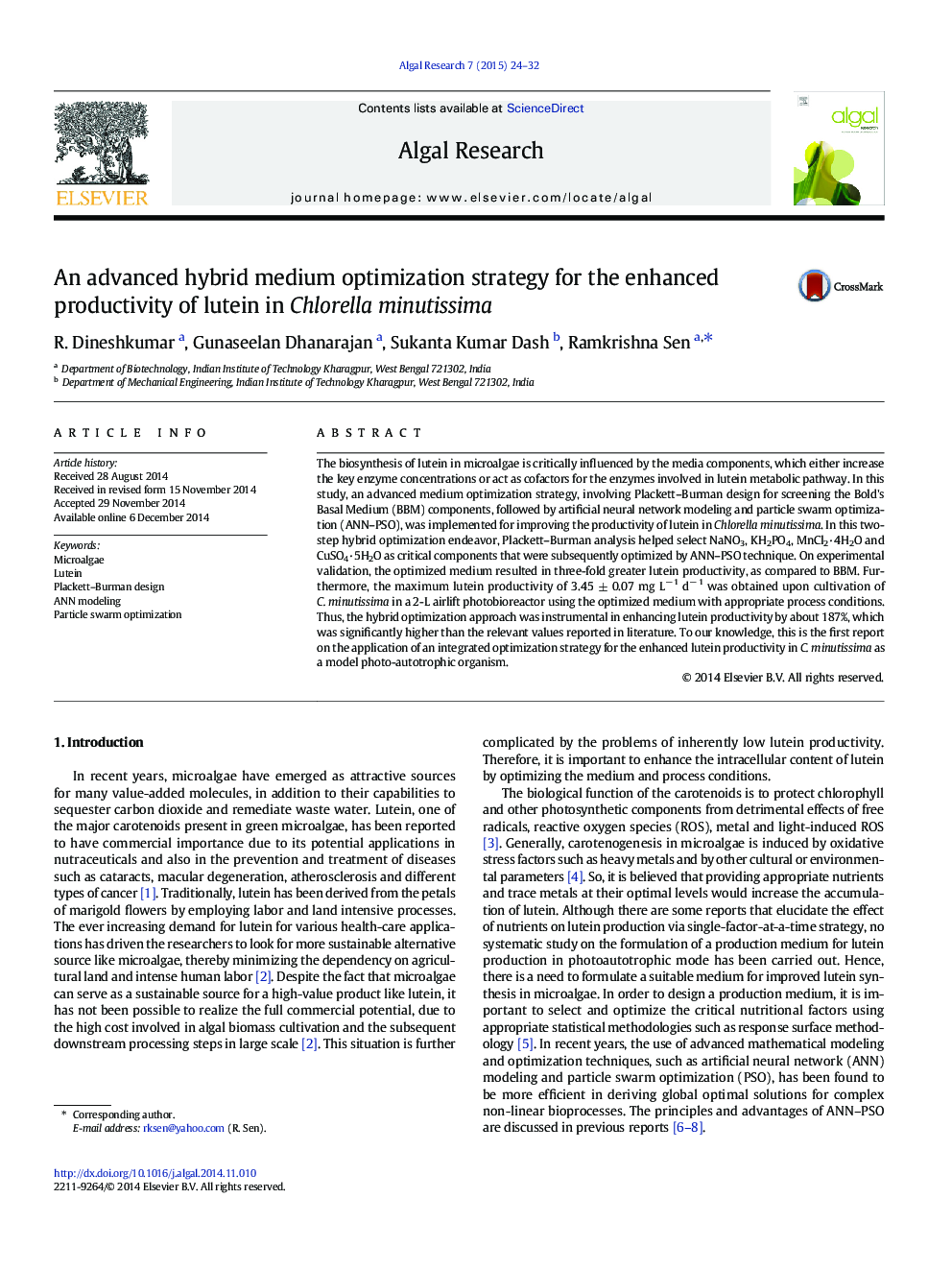| Article ID | Journal | Published Year | Pages | File Type |
|---|---|---|---|---|
| 1742045 | Algal Research | 2015 | 9 Pages |
•The critical major and minor nutrients influencing lutein synthesis were identified.•Application of hybrid optimization technique improved the lutein productivity by 3-fold.•The optimized Bold's Basal Medium resulted in 3.45 mg L− 1 d− 1 of lutein productivity.
The biosynthesis of lutein in microalgae is critically influenced by the media components, which either increase the key enzyme concentrations or act as cofactors for the enzymes involved in lutein metabolic pathway. In this study, an advanced medium optimization strategy, involving Plackett–Burman design for screening the Bold's Basal Medium (BBM) components, followed by artificial neural network modeling and particle swarm optimization (ANN–PSO), was implemented for improving the productivity of lutein in Chlorella minutissima. In this two-step hybrid optimization endeavor, Plackett–Burman analysis helped select NaNO3, KH2PO4, MnCl2·4H2O and CuSO4·5H2O as critical components that were subsequently optimized by ANN–PSO technique. On experimental validation, the optimized medium resulted in three-fold greater lutein productivity, as compared to BBM. Furthermore, the maximum lutein productivity of 3.45 ± 0.07 mg L− 1 d− 1 was obtained upon cultivation of C. minutissima in a 2-L airlift photobioreactor using the optimized medium with appropriate process conditions. Thus, the hybrid optimization approach was instrumental in enhancing lutein productivity by about 187%, which was significantly higher than the relevant values reported in literature. To our knowledge, this is the first report on the application of an integrated optimization strategy for the enhanced lutein productivity in C. minutissima as a model photo-autotrophic organism.
